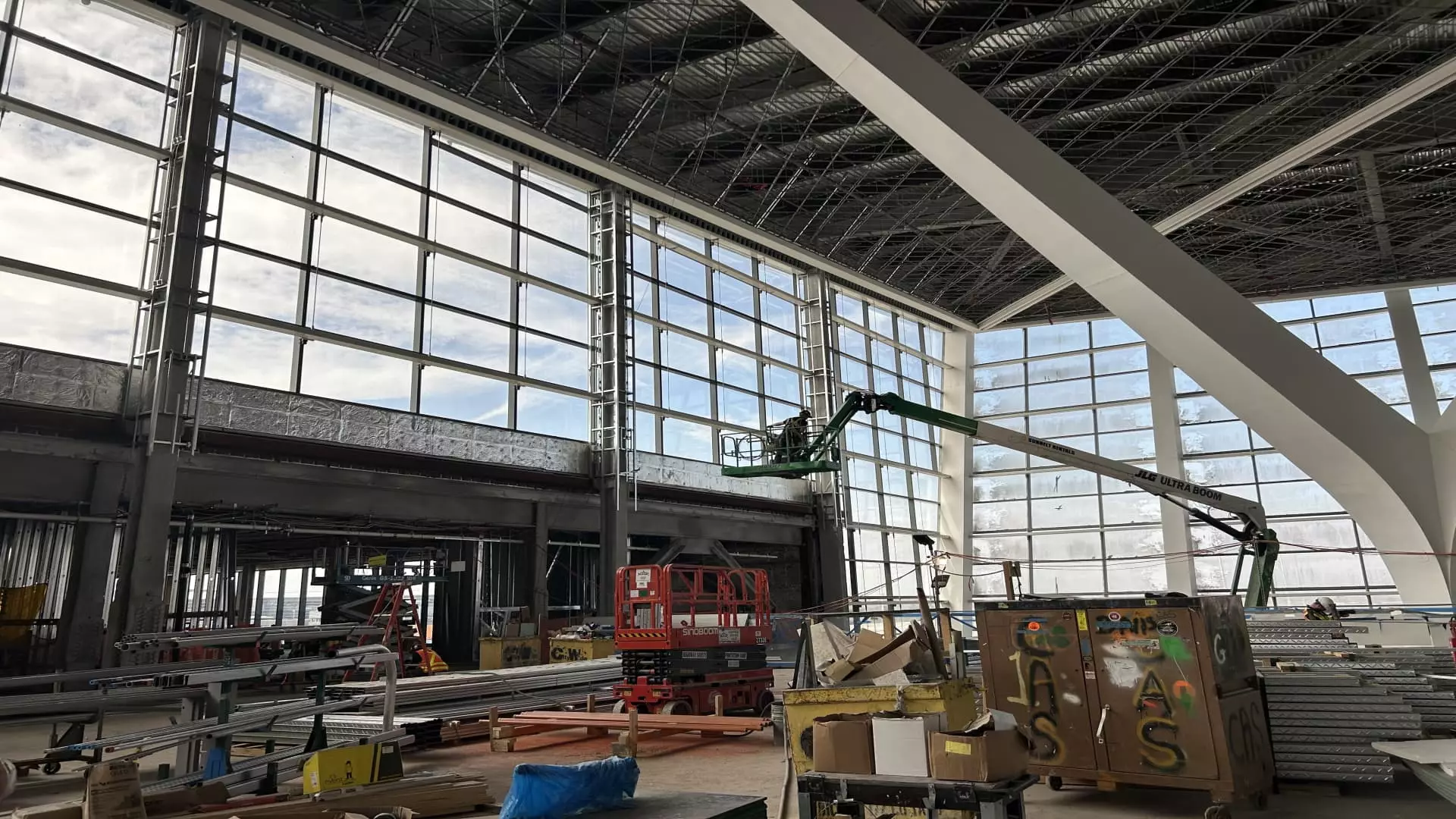John F. Kennedy International Airport is on the cusp of a revolutionary transformation that promises to redefine the passenger experience and elevate New York City’s status as a global transit hub. The ambitious $9.5 billion Terminal 1 is not just a building; it is a statement of future-bound innovation, aiming to seamlessly blend cutting-edge design with unparalleled service. When completed, this terminal will stand as the largest in JFK’s history, embodying a vision that prioritizes international travelers and sets new standards for efficiency, comfort, and aesthetic appeal.
What makes this project truly remarkable is its strategic focus on the needs of international passengers. From inception, the design team envisioned a space that caters to the unique demands of long-haul travelers while providing an atmosphere that is both inviting and efficient. The colossal structure, roughly the size of two LaGuardia airports combined, will serve as a gateway to the world, reflecting New York’s vibrancy and cosmopolitan spirit. As the first phase gears up for its opening in mid-2026, the anticipation is palpable among industry insiders and travelers alike.
Architectural Innovation and Passenger-Centric Design
At the heart of JFK’s Terminal 1 lies a commitment to reimagining what air travel can be. Architecture firm Gensler has crafted a design that evokes the delicate beauty of a butterfly, with a flowing, organic form and sweeping glass walls that flood the interior with natural light. This emphasis on daylight is more than aesthetic—it’s a conscious effort to foster a calming, welcoming environment amidst the often hectic airport setting.
The terminal’s layout emphasizes efficiency. By situating customs, security, and departure lounges on a single plane, the design aims to reduce congestion and waiting times. No more basement customs lines or convoluted navigation; instead, travelers will experience streamlined flows from check-in to boarding, all at the same level. The expansive windows not only offer breathtaking views but also create a sense of openness that alleviates traveler stress.
Crucially, the design team kept ‘international customer’ front and center. With airlines such as Turkish Airlines, Air New Zealand, Etihad Airways, and China Airlines preparing to operate prominently from the new facility, the terminal is tailored to meet the diverse needs of a global clientele. The focus on spaciousness, light, and clear signage makes the space intuitive and welcoming for travelers from every corner of the world.
Strategic Location and Infrastructure Enhancements
The timing of JFK’s terminal overhaul aligns with the upcoming 2026 World Cup, with the new Terminal 1 opening just ahead of this global event. This timing is strategic, showcasing New York’s capacity to host world-class sporting events and amplifying its international prestige. The project is part of a broader $19 billion effort by the Port Authority to modernize JFK, one of the world’s busiest airports.
In addition to the terminal itself, significant infrastructure upgrades are underway. Roadway improvements aim to ease traffic congestion that has long plagued the area, ensuring smoother arrivals and departures for the millions who pass through JFK annually. Meanwhile, enhancements to the AirTrain system ensure connectivity between terminals, parking lots, and nearby transit stations, making the entire journey more seamless.
This comprehensive upgrade also prioritizes operational capacity. The initial phase will accommodate 14 million passengers annually, with 23 gates—22 wide-body and one narrow-body—prepared for long-haul and domestic flights. Future phases will expand this capacity, culminating in a terminal capable of processing a total of 180 gates when completed around 2030. This phased approach reflects a realistic understanding of growth, ensuring JFK remains competitive and responsive to escalating demand.
Beyond Functionality: A Hub of Experience and Commerce
Incorporating more than 300,000 square feet of retail, dining, lounges, and recreational areas, the new terminal aims to make waiting an experience rather than an ordeal. Over 180,000 square feet will be dedicated to retail and food outlets, with the promise of exclusive features such as a cash-and-carry duty-free shopping experience. Unlike conventional duty-free stores, passengers can purchase goods duty-free and take them immediately, adding a layer of convenience and luxury.
The intent is to elevate JFK from merely a transit point to a destination in itself. By offering diverse shopping options, cultural amenities, and comfortable lounges, the terminal seeks to create an engaging environment that encourages travelers to relax and indulge before their flights. These amenities will serve both long-haul and short-stay travelers, emphasizing comfort and convenience at every turn.
Ultimately, JFK’s Terminal 1 represents a strategic leap forward—an effort to modernize infrastructure while reimagining the airport as a vibrant, customer-focused space. It sends a clear message that New York is committed to remaining at the forefront of global transportation, offering a glimpse into what the future of airports can be when innovation and user experience are prioritized.


Leave a Reply